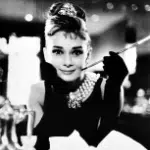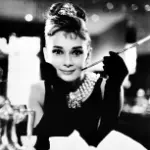“The Favourite” is directed by Yorgos Lanthimos, who has directed 7 feature films, including “Dogtooth”, “The Lobster”, and “The Killing of a Sacred Deer”. “The Favourite” won the Grand Jury Award and Best Actress at the 75th Venice Film Festival, receiving nearly 300 nominations in total. The story is set in early 18th century England and follows the queen and her two favourite concubines as they navigate palace politics and engage in a love-hate relationship with each other. In my opinion, the most interesting aspect of “The Favourite” is the wigs.

The wigs resemble sheep, coiling around the shoulders and draping over the head, creating a comical appearance. Notably, even the nobleman portrayed by Joe Alwyn in the movie takes off his wig, commenting, "It's so ridiculous," yet finds himself compelled to put it back on.

Western Europe has a fashion for wearing wigs. Especially from the 16th to the 18th century, there were women and men wearing wigs everywhere, some of them towering high or with long hair cascading down their shoulders. At that time, some people even thought that with thick curly hair highlighted, their faces looked like sunrise clouds rising over a sea of mist, not to cover up baldness.
The occurrence of this phenomenon has somewhat embarrassing roots. In the 16th century Western Europe, the sex industry was widespread, and even the most disciplined and controlled men struggled to restrain their desires, contributing to a climate of sexual licentiousness throughout the region. This, in turn, led to the rampant spread of venereal diseases. However, it wasn't the diseases themselves that caused balding; rather, it was the side effects of the medications used for treatment, resulting in thinning hair. This misunderstanding led to the unfounded belief that individuals with bald heads were immoral or lacked restraint.
Therefore, in 1562, when Elizabeth I, who was 29 years old, unfortunately contracted smallpox and began to lose her hair, she felt very embarrassed. So she sought out skilled craftsmen to carefully create a pair of chestnut wigs to conceal her situation. It is said that Elizabeth I wore wigs not only to cover up her baldness but also to maintain her youthfulness.

After realizing his baldness, France's Louis XIII immediately wore a wig, even though he was only 23 years old. His son Louis XIV also didn't escape this fate. However, the son did have leprosy. At that time, medical treatment was limited and usually involved using mercury washes or fumigation treatments. Although it has its effects, the disease couldn't be 100% cured and it had another side effect: significant hair loss. Therefore, he hired an entire team of 48 wig makers to make him various types of wigs and even established a wig-making guild in secret.
This became a trend, seen as a symbol of health and masculinity by those who lived during that time. Bald men were suspected of having venereal diseases, which was considered shameful. In short, the more hair a man had, the more masculine he was perceived as being.

That's why French philosopher Jean-Jacques Rousseau abandoned his sword, stockings, and watch, and even gave up his job, "retaining only wigs and coarse woollen sweaters."
English writer Samuel Pepys also felt uncomfortable wearing a wig after the bubonic plague outbreak, fearing that it might have come from the hair of people who died from the disease. However, he still wore wigs. In 1663, when his brother died, Samuel wrote in his diary with great sadness: "If he were alive, he wouldn't let anyone see his head. It made me feel extremely ashamed."

By the 18th century, Denis Diderot inserted a sentence in his “Encyclopédie” saying, "Long hair was a symbol of glory and freedom in ancient Gaul, a symbol of royal bloodline, while others cut it according to rank." So overnight, wigs represented not only masculinity but also the badge of nobility and power.
Ladies also competed to wear wigs, which were even more exaggerated than men's and soared into the clouds. They were adorned with various strange decorations such as butterflies, flowers, fruits, birdcages, landscape potted plants, warship models, etc.

It was not just shocking but also troublesome and dangerous. Once they wore them, they could not lie down, take transportation, play tennis, or even enter a normal door because the wig was too high, forcing the gatekeeper to use a spear to help them pass.

This was not the end of the matter, as the materials used to make wigs were usually wool, horsehair, yak hair, buffalo hair, which were highly flammable. Moreover, they were already placed at a high level, making it difficult to put out candles and chandeliers in case of a fire. They were also prone to being targeted by thieves. In 18th century England, the poor would train their children or monkeys to steal wigs and then resell them.

The wealthy were enraged, but for the sake of their image, they had to let it go. Even so, it could not stop the trend of wearing wigs. There were 945 wig makers in Paris alone, with countless apprentices. A shop could create more than 100 wigs a year, and one city alone produced up to 94,500 wigs a year. Some were suitable for hunters and horsemen, while others could be worn during windy or rainy weather. Due to this momentum, noble status became difficult to distinguish, as marquis de Mirabeau disdainfully said, "There are countesses and dukes." Therefore, movies and TV shows set in the 16th to 18th centuries often feature men and women wearing wigs. For example, the film "Vatel" starring Uma Thurman was set in Louis XIV's France, where ordinary people suffered and nobles lived in luxury.

In the "Interview with the Vampire: The Vampire Chronicles", Brad Pitt and Tom Cruise wore long hair that was elegant and enchanting.

In the "Pirates of the Caribbean" series, Captain Jack Sparrow wore a high-level gray style to impersonate a noble.

In the British drama "Harlots", set in London in the 18th century, both men and women wore wigs of various colors and styles.

The most exaggerated is "The Duchess", played by Keira Knightley as a pearl in London's noble circle, with her hair piled high into the sky.

British actor Patrick Stewart, also known as Professor X in the "X-Men" series, lost all his hair at the age of 19 and wore a period wig for a time during a performance in a theater in 1970.

Today, although venereal diseases are no longer as difficult to treat as before and people don't need hairstyles to show their noble bloodline, "wigs last forever, one is always in circulation," and some bald people still choose to glue on wigs. Actress Jennifer Lawrence once went on a TV show with a wig on her head and pulled off a piece of it, pasted it on her chin and said, "All the hair on my head is fake now."

A British company has identified a business opportunity stemming from this historical perspective, creating a type of wig piece crafted from real hair. These wigs are waterproof, dustproof, and can be worn continuously for up to six weeks without requiring removal for maintenance. Given the various side effects associated with medication and the high fees for hair transplantation, wearing a wig emerges as a cost-effective and efficient solution. If concerns about authenticity arise, an alternative idea is to collect some of your naturally shed hair when young and fashion a wig. This way, as you age and face potential baldness, you still have the comfort of wearing your own hair.


















































Share your thoughts!
Be the first to start the conversation.